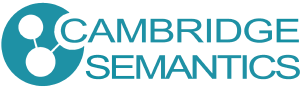
Why Knowledge Graph for Financial Services? Real Use Cases
Forward thinking organizations are deploying semantic Knowledge Graphs as a powerful option to meet growing functional data management challenges. Knowledge Graphs are not just in academia, every day new enterprise knowledge graph platforms are becoming operational for an array of financial services use cases.
Where to start?
Transformation takes time; there’s also no time to lose, so the time to start is now. Just like most good things in life, it’s recommended to start small. Select a targeted, high-impact use case to demonstrate capabilities, build organizational capabilities, and optimally realize business value. Let’s discuss some use cases.
At the Foundation
A knowledge graph is a conceptual model of the world that is intuitive to understand: entities, their properties and their relationships. The Financial Industry Business Ontology (FIBO) from the EDM Council is an example of a business conceptual model for the Financial Industry. Some advantages of a model like FIBO is that it gives us a common vocabulary and meaning for key concepts and terms – a rosetta stone for the industry and regulators. It also gives us a way to describe (and harmonize) our data in a way that is independent of any physical source.
We can use the conceptual model to harmonize data from diverse sources and to create governed data sets for business use case consumption. Our platform, Anzo, does this at enterprise scale and since it is based on W3C open graph standards, it natively supports industry models like FIBO and CDISC.
The 3 main deployment strategies we see are:
- Providing self-service access to complex data across many sources
- Augment data lakes with a semantic layer of business meaning and data management
- Acceleration and automation of AI and ML data preparation
#1. Alternative Data for Analytics and Machine Learning
Hedge Funds and Banks deploy knowledge graphs to explore new data sources with machine learning techniques in search of Alpha. The Knowledge Graph enables integration of these sources without coding, allows analysts to explore the data from any dimension without knowing specific questions in advance, and supports the preparation of features to feed to ML and AI applications.
#2. Trade Surveillance
Ugh, false positives – the bane of the trade surveillance world. How do you discover the cases where the pattern of activity that generates a higher risk score across multiple domains? With knowledge graph you can look at trading activity, restricted lists, watch lists, HR data, email communications, news stories, research reports, badge swipes, chats, and deal teams. This harmonization allows for an elevated risk profile and easy exploration into the connections between two traders of interest.
#3 Fraud Analytics
In a knowledge graph you can transform transactional data into a social/entity view, like: buyers, sellers, brokers, financial institutions etc. Then easily identify groups of individuals doing frequent transactions among themselves, for cash – groups worthy of further investigation for fraud.
#4 Data Migration
One of the most powerful applications for semantic Knowledge Graphs is data migration. Populating a data lake, consolidating mortgage systems or on-boarding new data feeds are all examples of this capability. Using a Knowledge Graph creates a hub and spoke model that dramatically reduces mapping effort. In addition, ETL code-generation eliminates the need for coders, creates self-documenting ETL and reduces maintenance costs by an order of magnitude.
 Cambridge Semantics Inc. is a modern data management and enterprise analytics software company. Our product Anzo® is the most complete, scalable, and powerful knowledge graph platform available today. Anzo transforms siloed data into knowledge graphs, revealing previously hidden insights, fueling pervasive analytics, and making previously unanswerable questions answerable. Our solutions enable organizations in Financial Services, Government, Healthcare, Life Sciences, and Manufacturing to accelerate data delivery and provide meaningful insights enterprise-wide at hyper-speed and scale.
Cambridge Semantics Inc. is a modern data management and enterprise analytics software company. Our product Anzo® is the most complete, scalable, and powerful knowledge graph platform available today. Anzo transforms siloed data into knowledge graphs, revealing previously hidden insights, fueling pervasive analytics, and making previously unanswerable questions answerable. Our solutions enable organizations in Financial Services, Government, Healthcare, Life Sciences, and Manufacturing to accelerate data delivery and provide meaningful insights enterprise-wide at hyper-speed and scale.

































